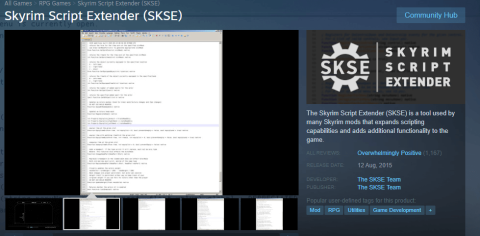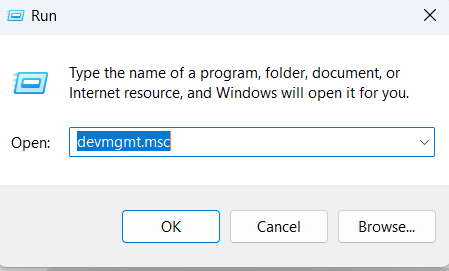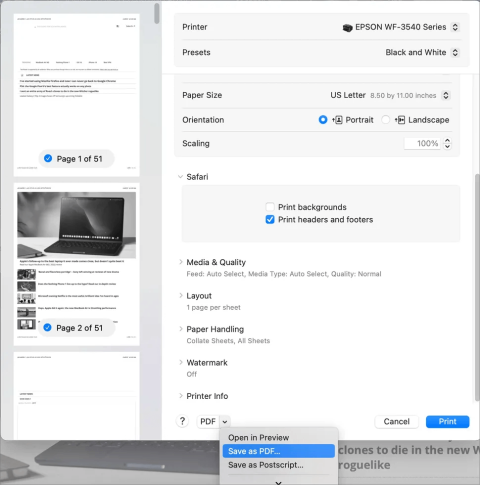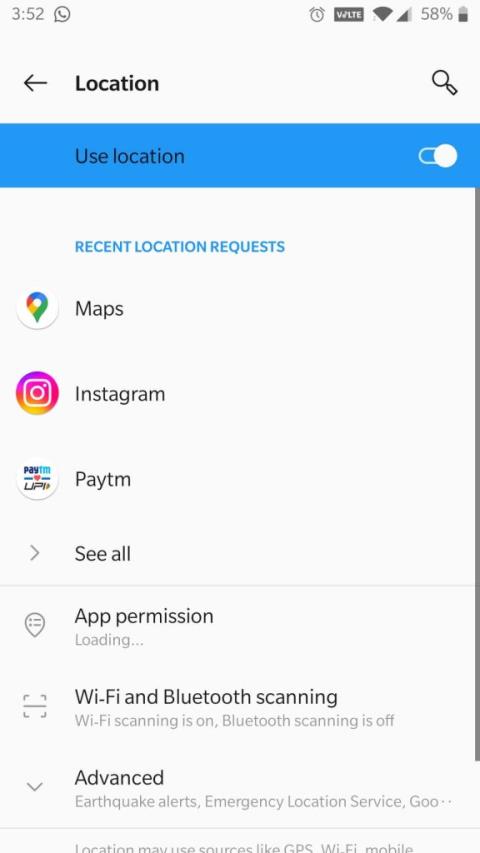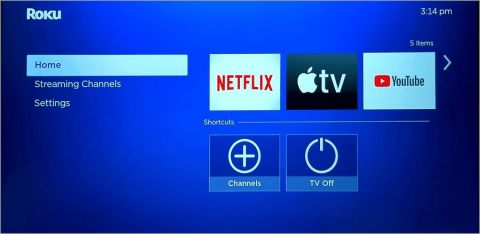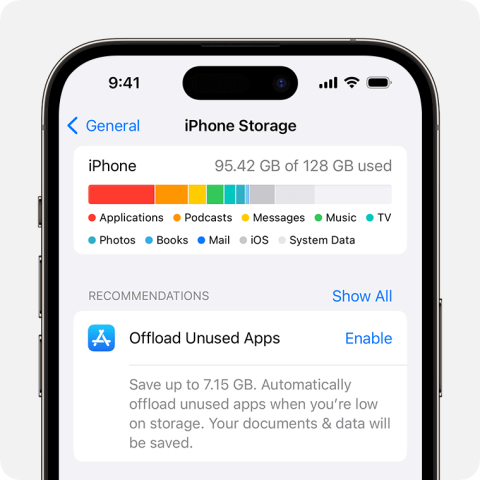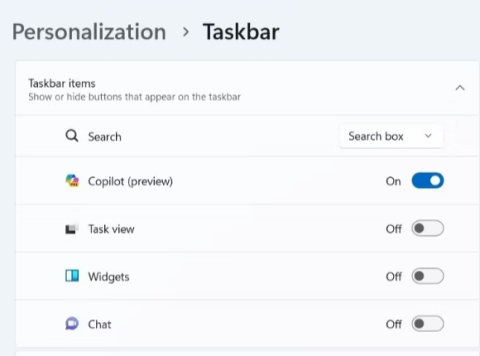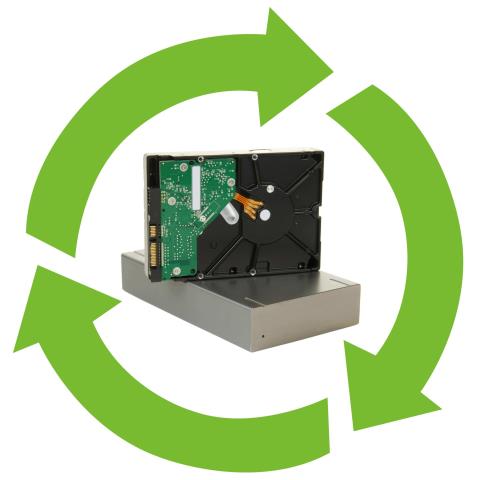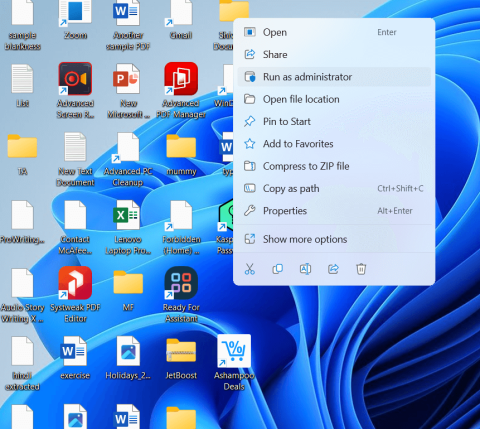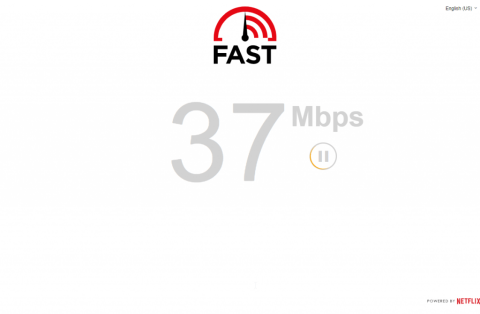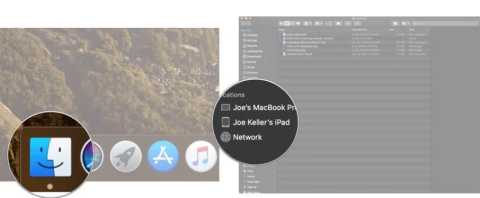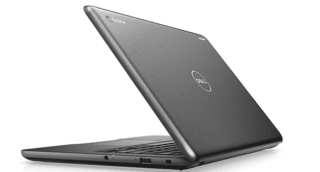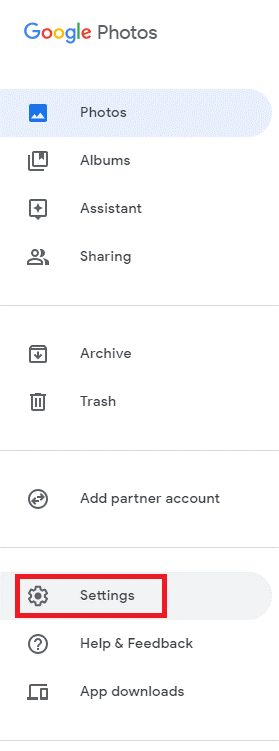Una delle applicazioni più popolari nel settore, Zoom, trova il perfetto equilibrio tra utilità e facilità d'uso. Ti permette di entrare in contatto con i tuoi amici, familiari e colleghi; ti consente di collaborare in remoto e introduce continuamente nuove funzionalità che vale la pena celebrare.
Tuttavia, la funzionalità di cui stiamo parlando oggi è in circolazione da molto tempo. Tuttavia, crediamo di non averne coperto tutte le basi così ampiamente come intendiamo. Quindi, diamo un'occhiata a una delle funzionalità legacy di Zoom: lascia che ti dica tutto ciò che devi sapere sull'opzione di registrazione cloud in Zoom.
Correlati: cosa sono le app Zoom e come usarle
Contenuti
Cosa significa registrazione cloud in Zoom?
Quando pensiamo alla registrazione, vengono in mente due varianti: registrazione locale e registrazione cloud. Il primo utilizza la memoria di bordo come server, memorizzando i dati necessari sul disco rigido. Quest'ultima, la registrazione su cloud, archivia i dati sui server di Zoom, senza richiedere nulla al disco rigido del computer.
A causa dell'archiviazione, la registrazione locale non è accessibile da nessuna parte del mondo. La registrazione su cloud, invece, rende le tue registrazioni disponibili su qualsiasi computer autorizzato, da qualsiasi parte del mondo. Quindi, rigorosamente dal punto di vista della comodità, la registrazione su cloud vince. Tuttavia, la registrazione locale continua a essere notevolmente più semplice da gestire.
Correlati: che cos'è l'ID riunione personale in Zoom e come cambiarlo
Quali sono i requisiti per la registrazione cloud in Zoom?
La funzione di registrazione su cloud è in Zoom da un po' di tempo e l'azienda si è astenuta dall'apportare troppe modifiche. Quindi, la funzione rimane esclusiva per gli utenti premium (solo host, non partecipanti) - Pro e superiori - il che significa che nessun utente gratuito può eseguire una registrazione cloud su Zoom. Inoltre, avrai bisogno di una connessione Internet decente per caricare il tutto sui server di Zoom.
Prima di iniziare il caricamento, ricorda che la registrazione cloud dipende dallo spazio che hai a disposizione, almeno per gli utenti Pro e Business. Gli abbonati a entrambi i piani ottengono 1 GB di spazio di archiviazione cloud per licenza, dopodiché la registrazione cloud non funzionerà come previsto. Solo gli utenti Enterprise ottengono il privilegio di uno spazio di archiviazione cloud illimitato. Quindi, se tendi a utilizzare la funzione un po' troppo spesso, prendi in considerazione l'iscrizione al pacchetto top di gamma per ottenere il massimo dalla tua esperienza Zoom.
Correlati: Come risolvere il problema dello schermo nero dello zoom su Windows 10
Come abilitare la registrazione su cloud
Con l'introduzione e i requisiti fuori mano, diamo un'occhiata all'abilitazione della funzione di registrazione cloud su Zoom. Con un paio di clic e alterna, puoi abilitare l'opzione di registrazione cloud per tutti gli host nel tuo account. Per prima cosa, vai su zoom.us e accedi con l'ID e la password della tua azienda. Accedi con un account Zoom a pagamento poiché gli account gratuiti non ottengono l'opzione di registrazione cloud. Ora, fai clic sul collegamento ipertestuale "Il mio account" nell'angolo in alto a destra dello schermo.

Quindi, vai alla scheda "Impostazioni" alla tua sinistra.

Quindi, fai clic sulla scheda "Registrazione".

Questo posto ti mostrerà tutte le opzioni di registrazione nel tuo account. È inoltre possibile controllare le opzioni di registrazione locale da quest'area. Per assicurarti che l'opzione di registrazione cloud sia abilitata per gli host nel tuo account, fai clic sull'interruttore "Registrazione cloud".

Questo è tutto! La registrazione su cloud sarebbe abilitata per tutti gli host.
Come configurare la registrazione su cloud
A differenza della registrazione locale che registra tutte le riunioni nelle impostazioni predefinite, la registrazione su cloud include alcune importanti opzioni configurabili. Di seguito daremo un'occhiata ad alcuni dei più importanti.
Visualizzazione galleria con schermo condiviso
Se desideri registrare le tue riunioni mentre è in corso la condivisione dello schermo. Puoi farlo con questa opzione. Registrerà la sessione di condivisione dello schermo e registrerà la visualizzazione della galleria della riunione. Se abilitato, l'oratore attivo viene visualizzato nell'angolo in alto a destra dello schermo condiviso.
Per abilitare l'impostazione, innanzitutto, fai clic su vai su zoom.us e fai clic sull'opzione "Il mio account" in alto a destra dello schermo.

Ora, fai clic sulla scheda "Impostazioni" a sinistra dello schermo.

Quindi, vai alla scheda "Registrazione" e assicurati che l'opzione "Registrazione cloud" sia abilitata.

Sotto l'interruttore, troverai alcune opzioni di registrazione cloud. Abilita l'opzione "Registra visualizzazione galleria con schermo condiviso" e fai clic su "Salva" in basso.

Aggiungi un timestamp
Quando stai affrontando registrazioni di grandi dimensioni, dirigere ed estrarre i dati dall'intera cosa può diventare una vera seccatura. Aggiungendo un timestamp, sarai in grado di scorrere facilmente le registrazioni e aggiungere note a parti specifiche durante la revisione. Potrebbe volerci un po' di spazio sullo schermo, ma è comunque un'ottima opzione da considerare. Per abilitare il timestamp, per prima cosa vai su zoom.us e accedi con il tuo nome utente e password. Quindi, vai all'opzione "Il mio account" facendo clic sul pulsante nell'angolo in alto a destra dello schermo.

Ora, fai clic su "Impostazioni" e poi vai all'opzione "Registrazione".

Sotto l'interruttore "Registrazione cloud", troverai una sezione avanzata. Sotto il banner "Impostazioni avanzate di registrazione cloud", seleziona l'opzione "Aggiungi un timestamp alla registrazione" e fai clic su "Salva" in basso.

Ottimizza la registrazione per editor video di terze parti
L'esecuzione di una registrazione cloud è solo una parte dell'immagine, la parte successiva tende ad essere molto più intricata. Se sei uno dei tanti che si impegnano in una sessione di editing hardcore dopo le registrazioni cloud, potrebbe essere una buona idea rendere le tue registrazioni il più compatibili possibile. La registrazione su cloud con zoom ti dà la possibilità di fare proprio questo e con solo un paio di clic.
Per rendere le tue registrazioni più facili da modificare su applicazioni di terze parti, per prima cosa vai su zoom.us e accedi con il tuo nome utente e password. Ora vai su "Il mio account".

Quindi, fai clic su "Impostazioni" e vai alla scheda "Registrazione".

Quindi, assicurati che la "Registrazione cloud" sia attivata. Sotto l'interruttore, troverai un banner "Impostazioni di registrazione cloud avanzate", sotto il quale sarebbe presente l'opzione per ottimizzare le registrazioni per app di terze parti. Abilita l'opzione e fai clic su "Salva".

Tieni presente che l'attivazione di questa opzione renderebbe le registrazioni più grandi e più lunghe da elaborare. Quindi, abilita questa opzione solo se sei un esperto di gestione dello spazio.
Attiva la registrazione automatica
In generale, attivare l'opzione di registrazione in Zoom è un'attività piuttosto semplice. Tuttavia, è ancora un compito, qualcosa che devi fare diligentemente prima dell'inizio di ogni riunione. Questo rituale lascia spazio agli errori, ad esempio dimenticando di accendere la registrazione. Quindi, per alleviare l'ansia di milioni di utenti, Zoom offre una piccola opzione di registrazione automatica, che automatizza l'attività di registrazione per ogni riunione.
Vai su zoom.us, accedi con le tue credenziali e vai alla sezione 'Il mio account'.

Ora, fai clic sulla scheda "Impostazioni" alla tua sinistra e vai su "Registrazioni".

Scorri oltre l'opzione di registrazione cloud e concentrati sull'opzione "Registrazione automatica". Attivalo e seleziona "Registra sul computer locale" o "Registra nel cloud". Se scegli quest'ultimo, avrai la possibilità di concedere all'host la possibilità di interrompere la registrazione automatica nel cloud. Seleziona o deseleziona l'opzione e fai clic su "Salva" per apportare le modifiche.

Elimina automaticamente le registrazioni cloud
Per salvare le tue registrazioni nel cloud, devi disporre di spazio sufficiente. Sfortunatamente, lo spazio è prezioso qui. Quindi, non è una cattiva idea automatizzare il processo di cancellazione. Anche farlo è abbastanza facile. Dopo aver effettuato l'accesso a zoom.us , fai clic sul pulsante "Il mio account" nell'angolo in alto a destra dello schermo.

Ora, fai clic su "Impostazioni" e vai su "Registrazione".

Assicurati che "Registrazione cloud" sia attivato e scorri verso il basso fino a visualizzare l'opzione "Elimina automaticamente le registrazioni cloud dopo giorni". Attivalo. Ora troverai la finestra di eliminazione automatica predefinita impostata su 30 giorni.

Per apportare modifiche, fai clic sul campo in cui è scritto "30" e scegli tra — '60,' '90' o '120.' Dopo aver finalizzato il fermacravatta, fai clic sul pulsante "Salva".

Come avviare la registrazione cloud in Zoom
Hai visto cos'è la registrazione cloud, come abilitarla e come configurarne le opzioni. Ora, diamo un'occhiata all'avvio di una registrazione cloud durante una riunione.
Computer
Innanzitutto, avvia il client desktop Zoom sul tuo computer e avvia o partecipa a una riunione.

Ora, nella parte inferiore dello schermo, troverai la barra degli strumenti Zoom. Ora, fai clic sul pulsante "Registrazione".

Quindi, seleziona "Registra sul cloud".

This would instruct Zoom to contact the cloud server and start the recording. If the recording commences successfully, you will find a cloud recording icon at the top-left corner of the Zoom meeting window.

Mobile
As you may already know, the Zoom mobile client doesn’t allow local recording. So, pushing the recording to the cloud is the only valid option here. To record on a mobile device, first, launch the Zoom client on your Android or iOS-powered mobile and either join or start a meeting. Now, tap on the ‘More’ button at the bottom-right corner of your screen.

When the options bar pops up, tap on ‘Record.’

A voice would go off, telling you that your recording session has commenced. A red ‘Rec’ logo would show up at the top-left corner of your screen, indicating that a recording session is in progress.

How to stop cloud recording
Stopping the cloud recording is straightforward in both mobile and computer clients.
Computer
The Zoom application on your desktop would replace the ‘Recording’ button with one pause/stop button when a recording session is in progress. If you wish to pause the recording and resume it a little later, you will need to click on the ‘Pause’ button.

To stop the recording altogether and save it to the cloud, you will have to click on the ‘Stop’ button.

Clicking on it would pop a dialog up, asking you whether you want to stop the recording for certain. Click on ‘Stop Recording’ to stop the recording for good.

The link to the recording is sent over as an email after the processing completes. Alternatively, you could click on the Pause/Stop button at the top-left corner of the screen, next to the ‘Recording’ indicator.

Mobile
Unlike the Zoom desktop client, you won’t actually get any glaring on-screen prompts that tell you that a recording session is in progress. You only get a red ‘Rec’ logo at the top-left corner that tells you about the recording.

The pause/stop controls are hidden further down the ‘More’ menu. So, you will need to click on the ‘More’ menu to access the options.

To pause the recording and resume it later, click on the pause button. To stop it and end the session, click on the ‘Stop’ button.

When the dialog pops up about stop recording, click on ‘Stop’ to end the session.

Where are the cloud recordings stored?
Unlike local storage, cloud recordings do not have a physical address on your disk. However, they are kept safely on Zoom’s servers, allowing you to download and share them whenever you feel like it. To access your cloud recordings, first, go to zoom.us and log in with your username and password that you used while taking part in the video calling session. Now, click on the ‘My Account’ button at the top-right corner of the screen.

Then, go to the ‘Recordings’ tab on your left.

Next, click on the ‘Cloud Recordings’ option.

Recordings for each session would be shown on the right. You can manipulate the recordings as you see fit.
How to download cloud recordings
Cloud recordings can easily be viewed online, but they cannot be edited as robustly without offline third-party tools. So, we must find a way to download the recordings, and the best way is through a simple download. To download your cloud recordings, first, go to zoom.us and log in. Next, click on the ‘My Account’ option at the top-right corner.

Now, click on the ‘Recording’ tab on your left, under the ‘Personal’ banner.

Then, click on ‘Cloud Recordings’ and your cloud recordings would show up on the right of your screen.

Alternatively, you could get to the recordings through the Zoom desktop client. After launching the application, click on the Settings option at the top-right corner, under your profile picture thumbnail.

On the left-hand-side panel, click on ‘Recording.’ On the right of ‘Cloud Recording,’ click on the ‘Manage’ option.

This would launch your default browser, ask you to authenticate, and take you to the ‘Recording’ page.
On the right of a recording, you’ll find a ‘More’ option.

Click on it and hit ‘Download.’

If you have multiple files under a meeting, they will be downloaded separately. Click on ‘Download’ again to start downloading to your hard drive.

Download audio-only or Shared screen with speaker view
If you wish, you could download the audio-only files from the screen recording sessions. Click on the name of the recording to explore additional options.

On the next screen, click on ‘Audio Only’ to download the entire recording without video.

Similarly, you will have to click on ‘Shared screen with speaker view’ to get the screen share view.
How to share cloud recordings
Sharing is one of the biggest perks of cloud recordings. Just a couple of clicks and you would be able to share the files with people who matter. First, you will have to access the recording screen. Go to zoom.us and click on the ‘My Account’ button at the top-right corner of the screen.

Now, go to the ‘Recording’ option on the left of your screen.

As an alternative, you could use the desktop client to open the app. After launching the application, click on the Settings option at the top-right corner of the Zoom window.

On the left, click on the ‘Recording’ tab. Then click on ‘Manage’ under ‘Cloud Recording.’

When you get to the recording page, click on. the ‘Share’ button on the right of a recording.

Click on it and then on ‘Copy Sharing Information’ to copy the sharing link to your clipboard.

Share with your colleagues to let them have a look.
How to delete cloud recordings
Once you have saved cloud recordings to your local storage, there is really no need to keep older recordings up on the cloud, especially if you have a limited plan. Having too many old recordings takes a significant toll on your storage, eventually preventing you from adding new recordings. So, to maintain sanity and peace of mind, be sure to click the delete button every once in a while.
First, go to zoom.us and click on ‘My Account’ at the top-right corner.

Now, go to the ‘Recordings’ tab on the left of your screen to see all the recordings.

Now, click on the ‘More’ button on the right-hand side of the recording.

When the overflow menu shows up, click on ‘Delete.’

Confirm your action by clicking on ‘Yes.’

There will be instances when you have to conduct multiple recording sessions in a single meeting. When that happens, deleting all recordings at once may not be a good idea.
To avoid that, click on the name of the meeting to access all the recordings associated with it.

Now, click on the recycle bin icon on the right of the ‘Copy Shareable Link’ button to delete individual recordings.

Click on ‘Yes’ to confirm.

Finally, you could also select multiple recordings by selecting them and clicking either the ‘Delete Selected (number of selections)’ or the ‘Delete All’ button.

Is cloud recording secure?
Cloud recording on Zoom is as secure as any other cloud service out there. The recordings are not End-to-End Encrypted, unfortunately, but hackers will not have an easy time hacking into your recordings. As a host, you can encrypt your recordings with passwords and only allow access to people you know and are trustworthy. Without the passcode, no one would be able to access your recordings. All in all, cloud recording in Zoom is reliable and will not expose your trade secrets to the world, granted you keep your passwords secure and do not share them with sketchy individuals.
Zoom Cloud recording for free users
The host of the meeting needs to have a licensed account (pro and above) to be able to record the meeting on the cloud. Participants need not have a licensed account, meaning they will be able to view or download the recorded meetings once the host shares with them.
However, free users cannot record a meeting on the cloud.
But the free users can record a meeting locally on their Windows or macOS computer or laptop by simply pressing the Record button at the bottom in the meeting screen. However, they will need the host to allow it. The host need not have a licensed account for this either.
RELATED
